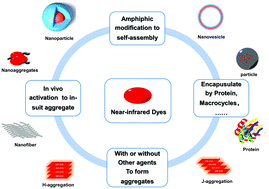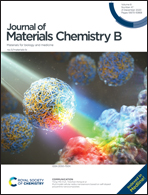Supramolecular ensembles modified by near-infrared dyes and their biological applications
Abstract
Near-infrared dyes possess the qualities of lower interference with biological autofluorescence, low photon scattering, and deep tissue penetration, and are being increasingly involved in the development of biomaterials for sensing and precision medicine. However, dyes usually suffer from the disadvantages of poor water solubility and photobleaching, factors that limit their application in vivo. The introduction of supramolecular ensembles can provide an ideal solution. This review presents recently developed supramolecular ensembles modified by near-infrared dyes. Compared with small-molecule fluorophores, the specific size of a supramolecular-based fluorophore endows it with longer circulation time in the bloodstream, increasing its chances of reaching a specific target. In addition, the construction of supramolecule-based fluorophores with versatile functions can be achieved by simple encapsulation or doping, instead of by complicated chemical synthesis. Thus, supramolecular-complex-based fluorophores offer high potential in diagnosis and therapy. This review outlines four different species of near-infrared dye based ensembles in terms of their method of formation, including simple encapsulation or doping and copolymerisation. Recently, a new technology has employed modified fluorophores for in situ self-assembly that form supramolecular ensembles at a specific position, thus solving the problem of poor uptake of nanoparticles by cells, and is included in this review. Finally, the future of this field is considered.



 Please wait while we load your content...
Please wait while we load your content...